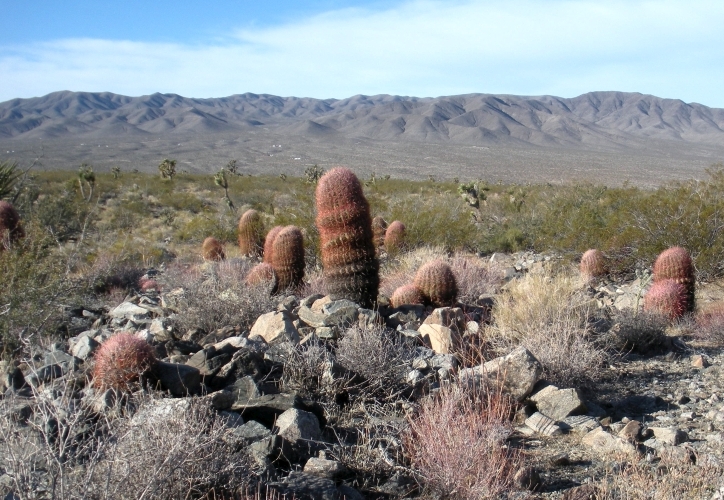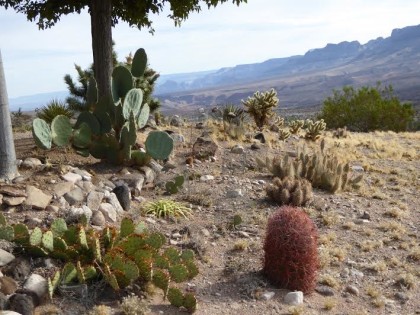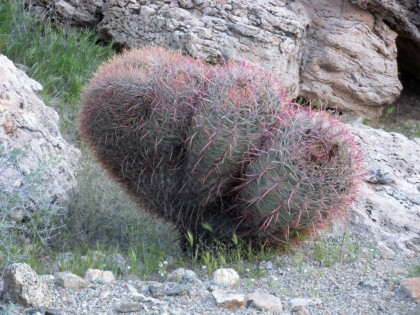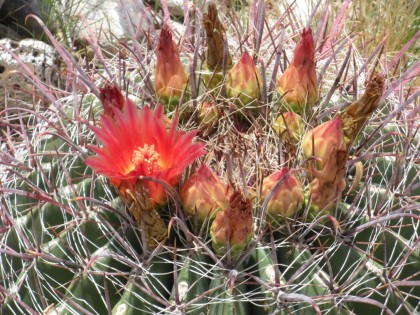(Photograph = Ferocactus cylindraceus, Nancy Hussey)
Introduction
Some barrel cacti grow to 2-foot across and over 2-meters tall in Mexico, but such plants are uncommon or absent in the United States. The shape of barrel cacti is different from that of columnar cacti. Barrel cacti are wide and often not much taller than wide–like a barrel. Barrel cacti seldom branch so they stand like sentinels. There are two barrel cactus genera in the United states, Ferocactus and Echinocactus.
The Details
Ferocactus cylindraceus has been known by different names including: Echinocactus cylindraceus, E. viridescens var. cylindraceus, E. acanthodes, F. acanthodes, F. acanthodes var. eastwoodiae, and F. acanthodes var. lecontei. Like many cactus species, there has been difference of opinions over the precisely correct name.
F. cylindraceus is found in the extreme southwestern corner of Utah, in southern Nevada, in eastern California, and in adjacent Arizona and Mexico. The plants are often 1- to 2-foot tall and covered in burgundy, curved spines. After rains the spines are especially colorful. Depending upon location, some forms of the cactus do not have the typical twisted and hooked spines.
F. cylindraceus grows to about 4500-ft high, but is more common at lower elevations. High altitude forms are expected to be cold-hardy if properly dry when cold weather arrives. It typically grows in rocky soils or alluvial fans. It is often seen on steep slopes that are seemingly composed of nothing but rock. In the northern extent of its range, plants may be found only on south-facing slopes where they receive the most sun in the winter. The flowers are yellowish, and often the outer tepals are burgundy or maroon.
F. cylindraceus makes a good pot plant because it is indifferent to many variables and it tolerates a lot of neglect. However, large plants are unwieldy. The main concerns are poorly drained soil or too much water.
Seed Banks in Ferocactus Wislizeni





